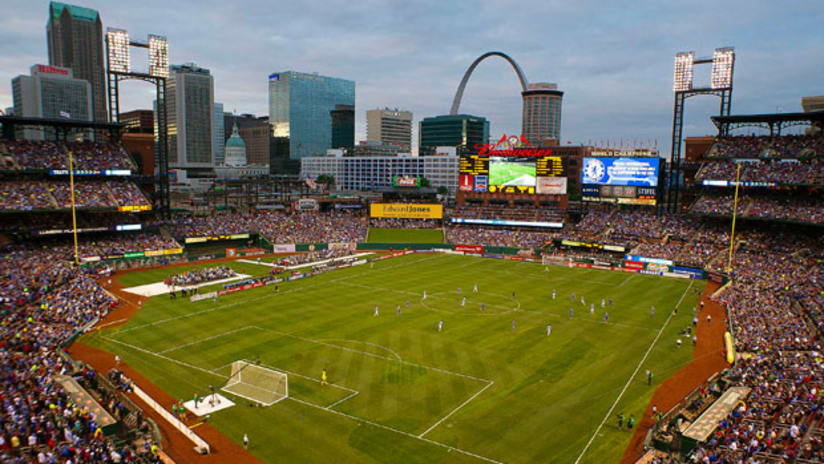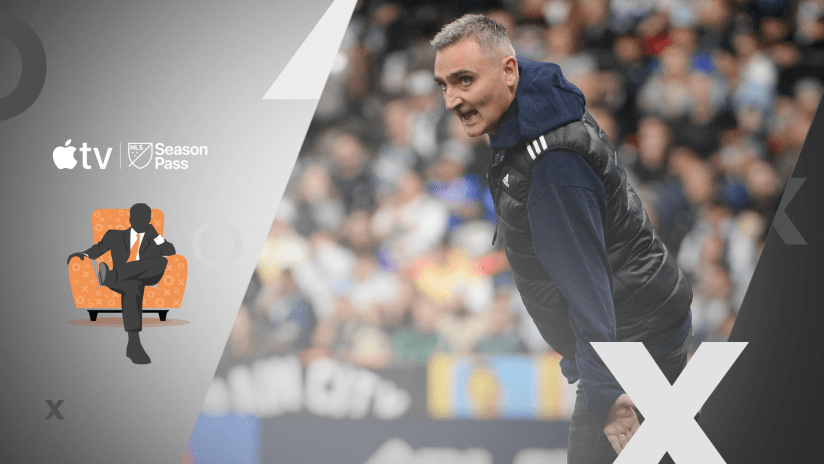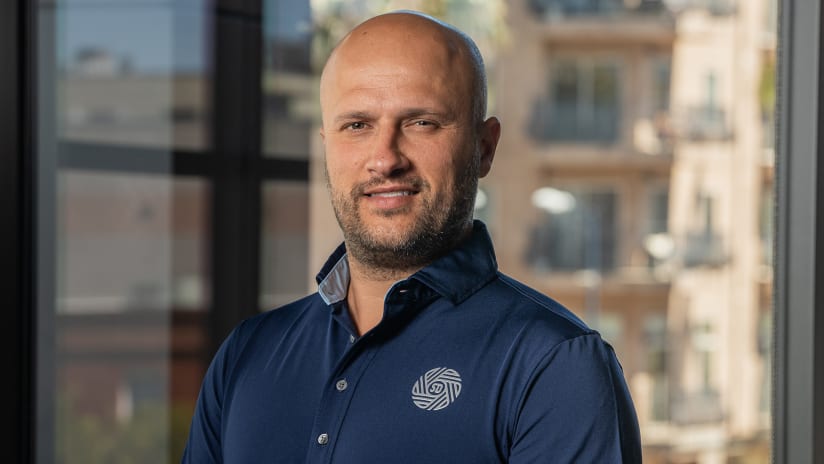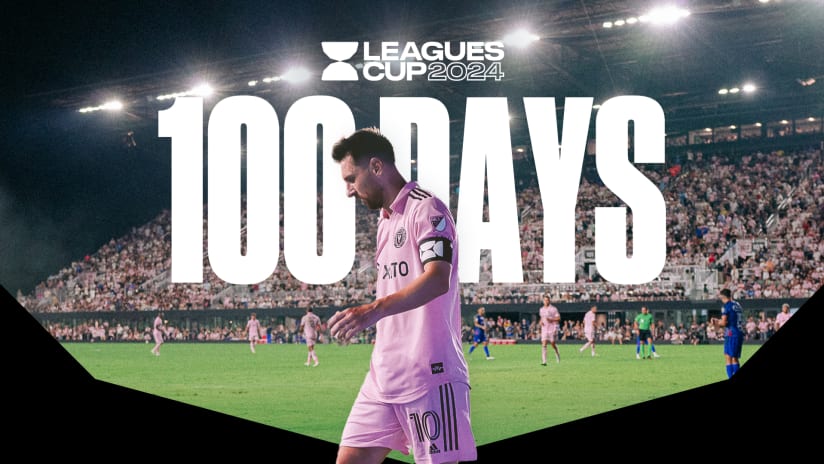John Harkes comes from a soccer culture. Take a few minutes to watch the MLS Insider video above and you'll learn that immediately.
The fact that Harkes has those roots – which go back to the homeland of his father, but more directly to his hometown in Kearny, N.J. – gives the lie to the notion that the US is a land without a soccer culture. Anyone who's been to the Scots Club in Kearney, or to the Courts in Harrison, knows that the beautiful game isn't some exotic "other" pasttime.
It's just what people from that little slice of New Jersey do.
The confusion, then, is that the US lacks a homogenous soccer culture. While you could look at baseball, basketball and football and drop a pin just about anywhere on the map of the US and find the home of a former pro, that's just not the case with our game.
Soccer originated in different hotspots in the US, and now is (finally) evolving into everyone's game.
But there are a few places where "everyone" got on the band wagon a little bit earlier. Let's start in the shadows of Red Bull Arena.
The Melting Pot – North Jersey
Give us your tired, your poor, your huddled masses. Especially if they have good close control, because they'll need it here.
You don't have much space in North Jersey, especially on those courts. You need to control with your first touch, you need to play one- and two-touch, and you need to be able to shield defenders. You need to be able to get out of tight spaces and you need to understand that your teammates are probably all just dying to make an inverted, diagonal run instead of going north-south. Soccer in North Jersey is positively claustrophobic.
It's also many-colored. New Jersey has always been a melting pot of immigrants, going all the way back to the 1930 US World Cup team – still the only US entry to make the semifinals. That immigrant influence – Scots, Portuguese, Mexicans, Brazilians, and even the odd Uruguayan – all eventually created a style that demanded skill and patience on the ball.
Harkes' hometown of Kearny was the epicenter of Jersey soccer, and over the years the shockwaves have reached every corner of the state.
The Best Back Then:Tab Ramos or Claudio Reyna
I'm weaseling out of picking between the two. What's important to understand is that Ramos and Reyna remain our two most technically proficient midfielders ever. That's a Jersey thing.
The Best Now:Juan Agudelo
Agudelo, like Ramos, moved with his family from South America to New Jersey as a kid. His Colombian flair was never out of place, and he still brings it out as necessary:
Note that Michael Bradley was born in New Jersey, but actually played his most critical developmental years in Chicago, and then at the IMG Academy in Bradenton, Florida.
America's Homeland – St. Louis
Who's the best left-footed crosser in MLS history? That'd be Brad Davis.
Who's the best right-footed crosser in MLS history? That'd be Steve Ralston.
St. Louis has obviously always had a love affair with soccer, going back to that 1930 World Cup. But they really left their mark on the 1950 tournament, providing about one-third of the team that beat England 1-0 in what is still the biggest upset in World Cup history.
In contrast to the "close control" nature of North Jersey soccer, St. Louis was all about finding space on the flanks, and then getting there as fast as possible. That's how Stix, Baer & Fuller - a St. Louis-based club that won three US Open Cups and finished runners up in three more – played in the 1930s. That's how St. Louis University, under the legendary Harry Keough, won their titles in the 1960s and '70s. And that's how Davis and Ralston became two of the greatest assist men in MLS history.
The Best Back Then: Keough
Keough, by his own admission, didn't have much in the way of ball skills. But he could rope a 50-yard pass, and was never so much as a step out of place when defending.
The Best Now: Davis
Like Ralston, the man can put a cross on a dime. So if you're a forward from St. Louis, you'd better be good in the air – just ask Will Bruin (click HERE to see his goal on a Davis cross from Wednesday night) or Taylor Twellman, shown below scoring off a cross from, yes, Steve Ralston:
The Birthplace of American Soccer – Fall River, Mass.
If you go back through the annals of US soccer history, you'll eventually find yourself sorting through a lot of Portuguese names. And those guys can almost all be traced back to a relatively tiny fishing town located in Southeastern Massachusetts between Providence and Cape Cod.
I can't tell you what the Fall River "style" was like, because there's not a ton of good description and almost zero film to speak of. But it is beyond argument that the Fall River Marksmen were the dominant team of the ASL in the 1920s and early 1930s. They won seven titles in 11 seasons, and added four US Open Cups (including two doubles) for good measure. They were a juggernaut unlike anything we've seen in MLS, or even back when the New York Cosmos ruled the old NASL.
Unlike North Jersey and St. Louis, as well as the final hotbed we're about to visit, Fall River and the surrounding eras aren't as loaded with soccer talent as they once were. But with the New England Revolution just down the street – Foxborough is a 45-minute drive – and their academy starting to churn out players, there's hope that Southeastern Mass can once again claim a seat at the table.
The Best Back Then:Billy Gonsalves
Gonsalves was called "the Babe Ruth of US soccer" as the hub of that Stix, Baer & Fuller team and the best US player at the 1930 and '34 World Cups, and for that I have to give him the nod over Bert Patenaude. While Gonsalves was undoubtedly the bigger star, Patenaude's place in the record books is secure for all time, as he recorded the first hat trick in World Cup history.
The Best Now:Geoff Cameron
Cameron's from Attleboro, Mass., which is about halfway between Providence and Foxborough – less than a half-hour from Fall River.
The Mother Lode – Southern California
Let's get this out of the way first: Southern California is a much larger geographical area than any of the others we've looked at. There are actually hotbeds within the larger hotbed – be it the Inland Empire, Orange County, South Bay, East LA, even all the way down to San Diego. You could pick any one of these sections and argue for its inclusion on this list. But I'm picking all of them, because I cheat.
Anyway, the National Team of Southern California would give the US national team an honest-to-god run for their money. It's basically a built-in advantage for the LA Galaxy and Chivas USA academies, so much so that Nick Firchau wrote 3,000 words on that very subject last year.
No one has ever properly explained to me why soccer took such a deep and ubiquitous hold in SoCal, though I have a theory: It's preposterously nice outside about 90 percent of the time. When it's that nice, running around for 90 minutes playing a game you love makes a whole lot of sense.
If that makes sense, here's something that doesn't: Southern California has not developed its own style, per se. You'll see plenty of players who show a strong Latin influence in their game – Landon Donovan, for example – but then others who play what many could consider a quintessentially American "robust" way of approaching the game – Carlos Bocanegra comes to mind.
Some may consider that a weakness of the game there, but I actually think it's a strength.
The Best Then: Paul Caligiuri
Played d-mid, right back and left back. Was excellent at all three spots, and scored the most important goal in US history. A 25-year-old Caligiuri would be a starter for the USMNT this summer.
The Best Now: Donovan
Until someone else starts making plays like this:
Other hotbeds of note:
Greater Philadelphia – Produced the great Walter Bahr, and saw the best years of the even greater Archie Stark for Bethlehem Steel. Andrew Wenger is a recent notable from the area.
North Texas – Dallas and the surrounding area has probably overtaken North Jersey as the No. 2 producer of US talent. Omar Gonzalez is the biggest name, but it's worth noting that the FC Dallas Academy has really started churning out the talent, including guys like Kellyn Acosta, Victor Ulloa and Danny Garcia.
Chicagoland – Chicago Fire fans had to wait a long time for one of their Homegrowns to make good, but now Harrison Shipp is carrying the banner. Brad Guzan, Ned Grabavoy and Brian McBride all hail from in and around the Windy City.












